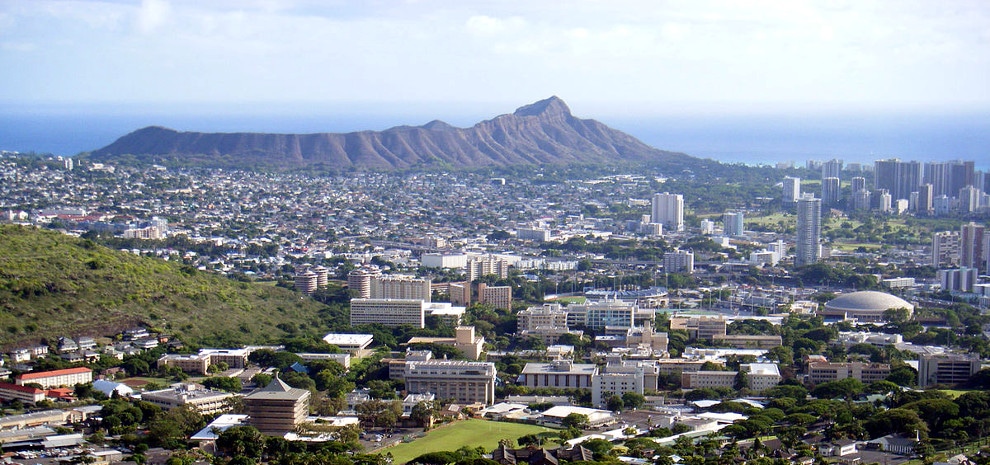As the global transition to renewable energy advances, corporations and cities have taken the lead with ambitious timelines to procure 100% renewable energy for their needs. For global companies including tech and retail giants, this has often come in the form of power contracts with off-site wind and solar plants, negotiated through utilities under “green tariff” agreements.
The University of Hawaii appears to be taking a page from this corporate procurement playbook, and last week announced with utility Hawaiian Electric Companies (HECO) a deal to develop a green tariff program for the university to procure power from renewable energy projects to meet its goal of supplying all of its power from renewables by 2035.
Right now the deal appears to be in its early stages, with an memorandum of understanding signed for the two entities to collaborate on the program. This program will be based on a competitive solicitation, and a joint working group with develop a “model tariff, eligibility requirements, cost structure and other details”.
The working group will also evaluate potential sites to host renewable energy projects, which will first focus on projects to offset energy usage at university’s Manoa campus in Honolulu. The group will also consider combined solar PV and battery storage to not only provide electricity but “system wide-benefits”.
Whatever program the working group comes up with will be subject to state regulatory approval. HECO and University of Hawaii note that if projects through competitive bidding are able to provide renewable electricity at “lower rates”, then it will be immediately available to other institutions in the future.
University of Hawaii’s renewable energy mandate is part of its net-zero energy goal and is on a more aggressive timeline than the state’s renewable portfolio standard (RPS), which mandates that HECO procure 100% of its power from renewable energy sources by 2045.
HECO expects RPS-eligible sources to exceed 27% of its power by the end of the year. As RPS policies tend to exclude large hydro, this is one of the highest levels in the United States, and Vermont and Maine are some of the only states that are meeting a higher portion of their electric demand with non-hydro renewables. However, due to aggressive procurement by large utilities California may take the lead by 2020.
This content is protected by copyright and may not be reused. If you want to cooperate with us and would like to reuse some of our content, please contact: editors@pv-magazine.com.









By submitting this form you agree to pv magazine using your data for the purposes of publishing your comment.
Your personal data will only be disclosed or otherwise transmitted to third parties for the purposes of spam filtering or if this is necessary for technical maintenance of the website. Any other transfer to third parties will not take place unless this is justified on the basis of applicable data protection regulations or if pv magazine is legally obliged to do so.
You may revoke this consent at any time with effect for the future, in which case your personal data will be deleted immediately. Otherwise, your data will be deleted if pv magazine has processed your request or the purpose of data storage is fulfilled.
Further information on data privacy can be found in our Data Protection Policy.